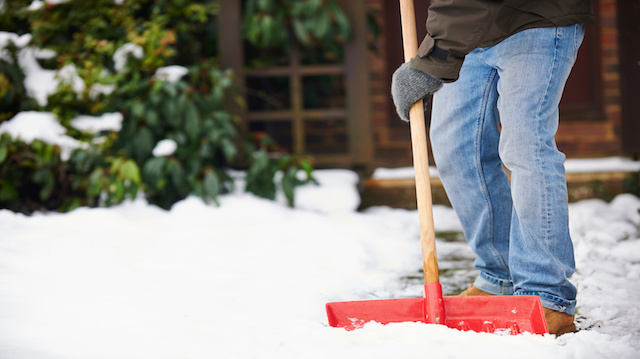
According to Harvard Medical School, shoveling snow is surprisingly dangerous. Researchers state that shoveling snow accounts for over 100 fatalities each year and thousands of injuries. But how can a simple household task result in such tragedy?
Harvard Health researchers explain that the risk of injury while shoveling snow is the result of several combined factors. Shoveling snow is harder than many people realize, especially if you are new to snow and have never done it before.
Shoveling snow is labor intensive, and muscle sprains and strains are common. However, the biggest health danger comes from the strain it can place on your heart. Most snow-shoveling injuries and fatalities are the result of snow shoveling–triggered heart attacks, which Harvard researchers state are common when individuals who are generally sedentary try to engage in intensive physical labor.
Use these tips to reduce your risk of injury this year:
Keep exercising
Intense exercise after a period of zero exercise can lead to an increased risk of injury. Exercising throughout the winter is healthy, and winter is an excellent time to mix up your standard exercise routine.
Try taking a new class at your gym or setting up a mini home gym if winter temperatures are too much for you. A brisk outdoor walk can also get your heart rate moving during a cold snap.
Watch for ice
Slips and falls are another major risk while shoveling snow. Ice can sit in patches under snow, which can lead to injuries if you are not careful. Wear appropriate winter footwear with a heavy tread while shoveling snow to keep your feet firmly on the ground.
Use tools wisely
Don’t try to load up your shovel with snow, and don’t attempt to use the largest shovel possible. A smaller shovel and lighter loads will help prevent muscle strain and reduce injury risk. Lighter loads will prevent many of the injuries commonly associated with clearing snow.
Keep hydrated
Before setting out to shovel snow, drink plenty of fluids. It is easy to become dehydrated even in cold weather, and shoveling snow is exhausting and dehydrating. Fluid intake before, during and after moving the snow can help prevent injuries and the risk of dehydration.
For fun — and to warm up — reward yourself with a hot beverage when the job is done.
Don’t overdo it
 Don’t shovel snow to the point of exhaustion. Just like any form of exercise, it is important to stop before the point of complete exhaustion to prevent serious injury risk. If you work hard enough to black out, you have definitely shoveled too much snow.
Don’t shovel snow to the point of exhaustion. Just like any form of exercise, it is important to stop before the point of complete exhaustion to prevent serious injury risk. If you work hard enough to black out, you have definitely shoveled too much snow.
If you have a large area to shovel, enlist the help of other housemates or family members. If you ever feel lightheaded, nauseous, see stars or black out, stop working and go inside immediately.
Limber up
Before shoveling snow, perform a few stretches or light calisthenics to warm up your muscles. Pulling injuries and sprains are most common when muscles are over-exerted without prior preparation. Try running in place for a few seconds, reaching up to the sky, touching your toes and swaying side to side for a minute before heading out with your shovel.
Although shoveling snow can be dangerous and even deadly, if you follow the practices outlined above, you will be a lot less likely to see any personal snow injuries this year.
—The Alternative Daily
Sources:
http://www.health.harvard.edu/blog/shoveling-snow-can-be-hard-on-the-heart-201302085868
http://www.ncbi.nlm.nih.gov/pmc/articles/PMC2958046

